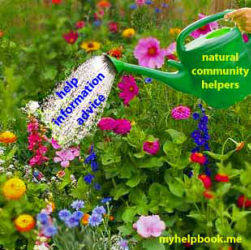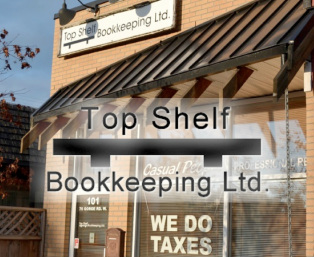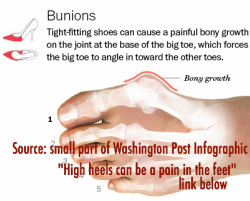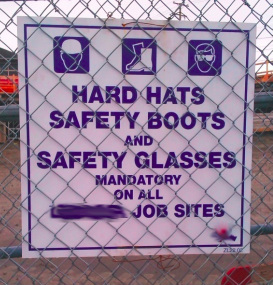 Who and what are natural community helpers? They are the people who other people seek out when they need help or advice. And if they don't have the answer to a problem, or aren't able to help, they likely know someone who can. They are a living storehouse of problem-solving, trouble-shooting information. Unlike community leaders or professional helpers who are in the foreground of a community, natural helpers are part of the background. Their contributions are impossible to measure. Often it is only when they are gone that we can truly see what a crucial role they played in creating an 'abundant community'. In a world that is dominated by stories of violence and destruction, we overlook the millions of tiny kindnesses between family, friends, neighbors and strangers. There was one exceptional natural helper in Victoria who was a replacement mother, auntie and grandmother to dozens of people and multi-generations. For decades Dorothy Livingston's home served as an informal transition house and meeting place. Her unobtrusive generosity and non-judgmental wisdom was under-appreciated because she made it seem that her way of being was just the normal state of human behaviour. Of course technology has allowed new helpers to emerge in new places. Small gestures of digital help are different than local in-person help, but they are still significant. For example, look at the twitter timeline of Vancouver singer-songwriter Bif Naked and the website of Bernadette Russell's 366 Days of Kindness project. But distant online helpers can't actually come over when you are sick, bring you soup and tidy up; they can't help you move, give you a lift, or bring you food. Real life help cannot yet be replaced by digital help, not while we still have physical bodies, eat physical food and need physical shelter. Learn more about natural community helpers:
One of the aims of My Help Book is to aid natural community helpers and self-advocates --people who find themselves having to be their own helper. By quickly finding known community resources, and learning of unfamiliar resources, it is much more likely that small problems can be addressed before they become urgent crises. My Help Book also serves an educational purpose: it provides information so people can learn what their rights are as citizens, consumers, and workers.  Thank you to Top Shelf Bookkeeping for sponsoring and donating 40 copies of My Help Book 2014 to Saanich Neighborhood Place (located in the Pearkes Recreation Centre behind Tillicum Mall). Since 1994 Top Shelf has provided extensive bookkeeping services to both for-profit and not-for-profit business sectors. Their services also include: personal tax services, small business, self-employed; corporate & charitable tax returns; e-file service; year ends and financial statements; weekly, monthly, quarterly or yearly ledger maintenance; accounts receivable and payable, project accounting and more. With a’la carte bookkeeping services, businesses can choose the level of service right for them. They will even convert manual paper bookkeeping systems to computerized. Top Shelf was founded in 1994 by Brian Ritchie who began his bookkeeping career in 1985 and since then has filled out an estimated 10,000 personal income tax returns, hundreds of corporate tax returns, and has helped hundreds of charities with their bookkeeping and reporting requirements. Brian's wealth of skill and familiarity with bookkeeping for charities comes not only from professional experience, but also from personal experience volunteering for a wide range of organizations early in his career. His skills bookkeeping for business started through entrepreneurial friends and has grown to include land developers, retailers, strata corporations, trades-people and more. See the Top Shelf website for a full list of tax and bookkeeping services offered in the Victoria and Southern Vancouver Island areas. They are experienced, professional as well as being friendly and community-minded. Their website also has helpful forms and important links. Contact Top Shelf Bookkeeping Saanich Location: #101-76 Gorge Road. West, Victoria, BC, V9A 1M1 Phone 250-388-9423, Fax 250-361-9424 Esquimalt Location: #1253 B Esquimalt Road, Victoria, BC, V9A 3P4 Phone 250-590-4050, Fax 250-590-5435 See their website for tax season hours.  IMPORTANT UPDATES - LAWS CHANGED IN 2017 2018 - Alberta employers no longer allowed to mandate high heels in the workplace. 2018 - (BC) Restaurant workers choosing sneakers over high heels. "I’m surprised it took so long for this law to be put into effect." 2017 - BC Bans mandatory high heeled shoes in workplaces. "...there is also a positive human rights consideration addressed by the changes given that men are typically not subjected to the same uncomfortable footwear expectation." 2017 - BC amends footwear regulations. Employers can no longer force workers to wear footwear with a design, construction or material that inhibits the worker's ability to safely do their job. In addition, employers must consider slipping, ankle protection, foot support, muscle or bone injuries, and electrical shock when considering mandatory footwear. New Worksafe BC rules: https://www.worksafebc.com/en/health-safety/education-training-certification/apprenticeship-programs/trades-topics/footwear LAWS HAVE BEEN CHANGED - ARCHIVED INFO BELOW - NEW INFO ABOVE 2014 - Some restaurants and other facilities have minimum heel heights for their female serving staff even though working in high heels can cause serious foot, ankle, knee and back problems. High heels are designed for fashion, not work-place safety. Consider: if carriage horses had to wear painful horse shoes causing injury and disability, there would be outrage, boycotts and animal cruelty charges. Women working on their feet all day in high heels should be viewed with the same alarm as if we saw construction workers wearing high heels on a job site. This is what Worksafe BC regulation 8.22 says about safe footwear in the workplace: "A worker's footwear must be of a design, construction, and material appropriate to the protection required [taking into consideration] slipping, uneven terrain, abrasion, ankle protection and foot support, crushing potential, temperature extremes, corrosive substances, puncture hazards, electrical shock and any other recognizable hazard." Read full Worksafe BC 8.22 regulation. Employers must also take into account their workers safety under Division 3-115 of the BC Worker's Compensation Act: "General duties of employers 115 (1) Every employer must (a) ensure the health and safety of (i) all workers working for that employer" If restaurants refuse to follow Worksafe regulations to protect women servers from injury and prevent long term disability and health problems, this means any employer is free to ignore any safety regulation whenever it suits them. There are many hazardous jobs, but health and safety regulations aim to minimize those hazards, often by prescribing protective clothing or equipment. Requiring female serving staff to wear dangerous, painful and injurious footwear does exactly the opposite: it maximizes the potential for hazard and harm. Falling down stairs while carrying heavy plates of food should not be considered a normal part of anyones workday. High heels are such an obvious work hazard that only a sadist could fail to recognize this. In what other job are workers purposely put in pain while also expected to smile and act cheerful? "Pointed toes and high heels are particularly inappropriate for working footwear." Government of Canada, Canadian Centre for Occupational Health and Safety Fact Sheets. High heels cause and contribute to the following conditions:
Conclusion: Harm from heels is minimized and is thought of as being an acceptable risk -- especially because high heels are a popular fashion fad for women even though heels were originally only worn by only men and after that by women to show they were a member of the leisure class (2). However, harm from heels should not be thought of as an acceptable workplace risk, not just because it violates and make a joke of work safety regulations, but because the harm can accumulate slowly. After working for a certain number of hours wearing heels, it is certain there will be a loss of function in your feet, ankles, knees or back. Loss of mobility has serious long term impacts but young women when they are thinking about the need for income to pay off student loans, or providing income for their children, cannot afford to worry about long term costs to their health and mobility. And if they are aware of the harm, as Amy Tuckett states in her interview about this issue, "servers don't want to stir anything up or they may be fired." (1) The question that needs to be asked: If health and safety regulations for women servers are ignored, should all health and safety regulations be ignored? And second: What century are we in? More information on this issue:
BC Ministry of Labour Restaurant Employees Fact Sheet regarding:
Related Links:
Quotes from online discussion on restaurant clothing and footwear requirements: "[Two] girls just went to the labour board because they were discriminated against for getting pregnant and no longer meeting “uniform standards”. The uniform in the lounge is completely different from the dining room. Girls in the lounge are required to wear at least a 2 inch heel and now the management is cracking down on the width of the heels. Now they prefer them to be the slender, almost stiletto type of heel because the thicker, more comfortable heel isn’t as ‘classy’. A lounge server told me a couple days ago that she was taking advil during her shift because her feet hurt so much." |
AuthorMy Opportunity & Help Book BC Categories
All
Archives
December 2020
|
Proudly powered by Weebly


 RSS Feed
RSS Feed